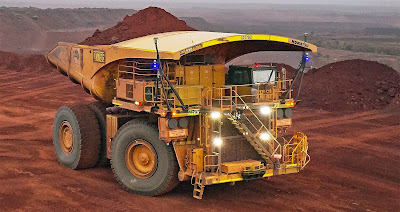HEDGE FUNDS GAIN IN JANUARY, NAVIGATING VOLATILITY
HFRI Event Driven, RVA & Crypto lead strategy performance;
Deep value Special Situations, Merger Arbitrage, Credit lead sub-strategies
CHICAGO, (February 5, 2021) – Hedge funds advanced in January to begin
2021, actively trading through a turbulent month dominated by a volatile
surge in trading from retail investors concentrated in a handful of
deep value equities with significant short interest. The HFRI Fund
Weighted Composite Index® (FWC) gained +0.9 percent in January, while
the investable HFRI 500 Fund Weighted Composite Index advanced +0.35
percent, according to data released today by HFR®, the established
global leader in the indexation, analysis and research of the global
hedge fund industry.
Reflecting the powerful trading trends, the HFRI FWC experienced a wide
dispersion in constituent performance, as the top decile of the HFRI
gained +11.6 percent, while the bottom decile declined -7.8 percent for
the month. As reported previously by HFR, total hedge fund capital
jumped to $3.6 trillion to begin 2021, a 4Q20 increase of $290 billion,
representing the largest asset growth in industry history. Estimated
4Q20 net asset inflows totaled $3.0 billion, bringing total inflows for
the second half of 2020 to $16.0 billion.
Event-Driven strategies, which often focus on out of favor, deep value
equity strategies and situations, led strategy performance in January,
with the investable HFRI 500 Event-Driven Index surging +3.0 percent for
the month, while the HFRI Event-Driven (Total) Index gained +2.8
percent. ED sub-strategy gains were led by Merger Arbitrage, Special
Situations, and Distressed exposures, strategies which categorically
trade in deep value equity situations, including companies which are
possible targets for restructuring, acquisitions or investor-driven
strategy shifts. Following strong performance in 4Q20, the HFRI ED:
Merger Arbitrage Index surged +4.0 percent in January, the HFRI ED:
Special Situations Index advanced +3.8 percent, and the HFRI ED:
Distressed Index added +2.6 percent. The investable HFRI 500 ED: Special
Situations Index jumped +6.2 percent for the month, and the HFRI 500
ED: Merger Arbitrage Index advanced +5.1 percent.
The fixed income-based HFRI Relative Value (Total) Index gained +1.3
percent in January, while the HFRI 500 Relative Value Index advanced
+1.2 percent for the month, led by the investable HFRI 500 RV: Fixed
Income-Convertible Arbitrage Index, which jumped +3.5 percent, and the
HFRI RV: Yield Alternatives Index, which added +4.0 percent.
Following the 2020 surge, Blockchain and Cryptocurrency exposures
continued to deliver strong performance as cryptocurrencies hit record
highs and as hedge funds increasingly incorporated related exposures
into new and existing fund strategies. The HFR Blockchain Composite
Index and HFR Cryptocurrency Index each surged over +48.0 percent in
January.
Through intense stock volatility, the HFRI Equity Hedge (Total) Index
advanced +0.8 percent for the month. Equity Hedge funds experienced a
wide dispersion of sub-strategy performance led by the high beta,
long-biased Energy and Fundamental Growth exposures. Following strong
4Q20 gains, the HFRI EH: Energy/Basic Materials Index surged +4.8
percent in January, while the HFRI EH: Fundamental Growth Index added
+2.3 percent. Partially paring these gains, the HFRI EH:
Sector-Technology Index declined -1.1 percent, and the HFRI EH:
Multi-Strategy Index fell -0.8 percent for the month.
Risk Premia, Risk Parity and Liquid Alternatives produced mixed
performance in January, led by equity and commodity exposures. The HFR
Bank Systematic Risk Premia Equity Index advanced +2.2 percent for the
month, while the HFR BSRP Commodity Index gained +1.6 percent. The HFR
Risk Parity Vol 12 Institutional Index fell -0.2 percent in January,
while the HFRI-I Liquid Alternative UCITS Index posted a narrow loss of
-0.14 percent for the month, driven by the -0.3 percent decline in the
HFRI-I UCITS Macro Index.
Uncorrelated Macro strategies posted a narrow gain in January, with the
HFRI Macro (Total) Index advancing +0.2 percent, while the HFRI 500
Macro Index added +0.1 percent. Macro sub-strategy performance was led
by the HFRI Macro: Discretionary Thematic Index, which gained +1.8
percent for the month, and the HFRI Macro: Multi-Strategy Index, which
added +1.1 percent.
"Hedge funds effectively navigated the idiosyncratic stock trading
volatility which focused on deep value equities with high short
interest, with this trend driving gains across Event Driven strategies
which categorically focus on inexpensive, out of favor equities that are
experiencing fundamental, structural transition in the underlying
businesses. While certain sub-strategies declined in January, as is
evidenced by the wide dispersion in performance, as a direct result of
the size, breadth and diverse nature of hedge fund strategies, overall
industry performance was positive for the month," stated Kenneth J.
Heinz, President of HFR. "While significant financial market attention
has been focused on a handful of funds and small number of equities
impacted by these recent trading trends, the overall hedge fund industry
is comprised of over 9,100 funds managing nearly $3.6 trillion across a
highly diverse range of strategies, which include significant capital
exposure to out of favor, deep value equities. With an emphasis also on
opportunistic positioning and sustained capital appreciation achieved
through specialized long-short portfolio management, leading
institutions are likely to continue expanding allocations to hedge funds
as a tool for achieving their long-term portfolio objectives."


































